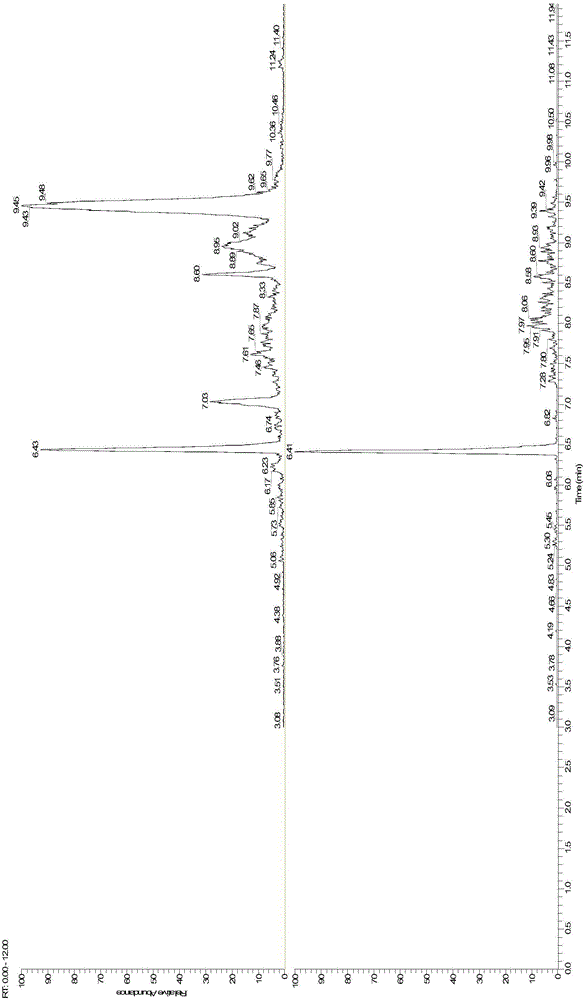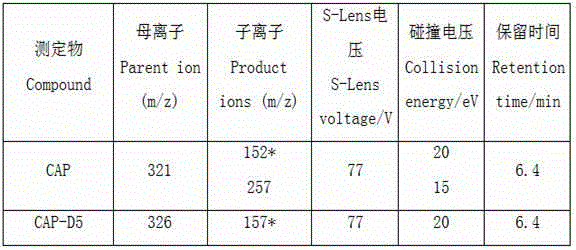Method for determining residual quantity of chloramphenicol in bee wax by n-hexane pre-treatment-high performance liquid chromatography-tandem mass spectrometry
A technology of high performance liquid chromatography and tandem mass spectrometry, applied in the field of determination of chloramphenicol residues in beeswax, can solve the problems of complex beeswax matrix and inability to use detection
- Summary
- Abstract
- Description
- Claims
- Application Information
AI Technical Summary
Problems solved by technology
Method used
Image
Examples
Embodiment Construction
[0026] 1 Experimental part
[0027] 1.1 Instruments and reagents
[0028] Ultimate 3000 ultra-high performance liquid chromatography-TSQ Vantage triple quadrupole tandem mass spectrometer (Thermo Scientific, USA); MS 3 digital vortex mixer (IKA, Germany); MD 200 nitrogen blowing instrument (Hangzhou Aosheng Instrument Co., Ltd.)
[0029] Chloramphenicol (CAS56-75-7, purity ≥ 98%) and chloramphenicol-D5 (purity ≥ 98%), Dr. Ehrenstorfer Company. Methanol, n-hexane, and ethyl acetate were all chromatographically pure; OASIS HLB solid-phase extraction cartridge: 500 mg, 6 mL (Waters, USA).
[0030] 1.2 Preparation of standard solution
[0031] Weigh 10 mg of chloramphenicol standard substance (accurate to 0.1 mg) and place it in a 100 mL brown volumetric flask, dissolve it with methanol and dilute to the mark, and mix well to prepare a 100 mg / L standard stock solution. Prepare a 1mg / L single-standard stock solution with methanol, and dilute it with fluidity to form a correspond...
PUM
| Property | Measurement | Unit |
|---|---|---|
| correlation coefficient | aaaaa | aaaaa |
Abstract
Description
Claims
Application Information
 Login to View More
Login to View More - R&D
- Intellectual Property
- Life Sciences
- Materials
- Tech Scout
- Unparalleled Data Quality
- Higher Quality Content
- 60% Fewer Hallucinations
Browse by: Latest US Patents, China's latest patents, Technical Efficacy Thesaurus, Application Domain, Technology Topic, Popular Technical Reports.
© 2025 PatSnap. All rights reserved.Legal|Privacy policy|Modern Slavery Act Transparency Statement|Sitemap|About US| Contact US: help@patsnap.com



